After a morning on their hands and knees using trowels to gently scrape back layers of soil untouched for millennia, the archaeology volunteers took a well-earned tea break to discuss their findings.
But as they reflected on the exciting discoveries being unearthed at the East Lomond hill fort and admired the stunning views across the Fife landscape, thoughts also turned to what the late archaeologist Dr Oliver O’Grady might have thought.
Legacy of Dr Oliver O’Grady
It’s more than 27 months since Dr O’Grady, who was one of Scotland’s leading archaeologists, died suddenly in May 2020 aged just 39.
The father of two young children who managed and directed Perthshire-based OJT Heritage had worked on many projects including investigations at Scone Palace, St Serfs, geophysical survey and excavation at Fortingall and work at the Howff in Dundee.
In Fife he had worked on Lochore Castle and was also commissioned by Falkland Stewardship Trust to develop and deliver community excavations at an important late Iron Age settlement and metal-working site on East Lomond hill fort.
His warmth, openness and encouragement were appreciated by all excavation volunteers and staff when he led the Falkland Stewardship Trust’s archaeological excavations on the East Lomond hill fort in 2017 and 2019.
But when he died suddenly at home in 2020, two months into the first Covid-19 lockdown, it led to an outpouring of shock, sadness and disbelief in archaeological circles and beyond.
Heavy blow
A combination of his untimely passing and the onset of the pandemic meant archaeological work on East Lomond went into abeyance.
Dr O’Grady’s loss was a heavy blow to his team and colleagues on the Falkland Estate where, as lead archaeologist, he was instrumental in beginning to uncover the history of one of Fife’s most significant Iron Age hill forts.
His presence and influence remains there as ‘Olly’s Bench’ generates curiosity and discussion on a regular basis at the Stables Cafe on the Falkland Estate. Aptly, it faces towards the hill.
However, following in his footsteps and after patient negotiation and planning, the Falkland Stewardship Trust and Aberdeen University recently commenced a new chapter of discovery with a fresh community archaeology project on the hill.
Start of new chapter
Following a call for community volunteers on the estate website, 28 individuals signed up to participate in these new excavations led by joint directors Joe Fitzpatrick – Falkland Stewardship Trust chairman – and Dr James O’Driscoll of Aberdeen University.
In an interview with The Courier, Mr Fitzpatrick explained how they were committed to ensuring that Dr O’Grady’s legacy is respected and continues at East Lomond – and crucially, there was no shortage of volunteers keen to take part.
“Oliver was such a good fit to our values which were about good care of the land, environmental concerns, concerns for the deep history of the Lomonds, and encouraging community participation in the Falkland estate. He was such a good ‘people person’,” said Mr Fitzpatrick.
“He was excellent with the volunteers. We put a premium on the quality of the volunteer experience for people that contribute to work on the estate. He had the technical skills as well as the leadership and the people skills.
“He and I had a very strong and close bond and a passion for this particular hill, and the Lomonds beyond.
“He was central to all that we were developing in our archaeology programme, and we had great ambitions looking to the future.
“So you can imagine when all that came to a sudden stop – it was such a shock to his friends and colleagues here – several of whom had been mentored by Oliver.
“His presence and influence was with us on the hill in August – it’s always going to be there I think.”
Focus of 2022 dig
Picking up from where they left off in 2019, Mr Fitzpatrick explained that the primary focus of the 2022 dig was to obtain soil samples from underneath the outer annexe wall of the hill fort which could be successfully dated in the laboratory.
Getting accurate dates for the outer wall might give a good foundation date for a significant period of the hill fort’s occupation and use.
In 2019, radio carbon dating from the front end of the wall gave a 3rd-4th century timeframe of 246 – 382 AD.
This time, however, it’s hoped the samples taken by Aberdeen University will give some sharper dates from within a narrower time frame, giving an accuracy which was not available before.
“It took a few patient days digging in very windy conditions to reach the wall underground, clear away tumble, and identify both the inner and outer faces of the wall,” said Mr Fitzpatrick.
“But we did it! We opened two 10m x 4m trenches on different parts of the hillside and achieved all of our agreed objectives – soil and charcoal samples collected for dating and the foundation of the outer annexe wall identified.”
In addition and unexpectedly, five hearths were also discovered sitting just within the wall and some small finds recorded.
What’s unusual about these hearths is they are adjoining the outer perimeter wall of the hill fort annexe, so there are questions about why they are found in these locations.
New partnership
The other significant factor, of course, is that this was Falkland Stewardship Trust’s first step with a new partner.
Given that Dr O’Grady was impressed by the work of Dr James O’Driscoll and his colleague Gordon Noble on the Northern Picts project at Moray, Mr Fitzpatrick is sure he would have been pleased to know of this new partnership.
Feedback from Aberdeen University has also been very positive and generous, describing the Falkland team as “the best they’ve ever worked with”, and saying how much they enjoyed working on East Lomond.
The university are now actively processing the samples and will be working on an excavation report for the trust.
Once received in October or November, the Stewardship Trust and the university hope to arrange a local talk in order to share the findings and any new knowledge about the East Lomond hill fort.
It also has potential, however, to shed light on the relationship between the royal Pictish elites who lived there and the Roman Empire.
Significance of East Lomond
Sitting atop the extinct 300 million-year-old volcanic summit – Fife’s second highest hill – the East Lomond hill fort is listed in the Royal Commission’s inventory of 1933 as a scheduled monument.
Current archaeological evidence suggests there was a hill fort on the site from at least the first to the seventh century AD.
This seat of power centre would be central to a much larger community comprising many farmsteads stretching below for miles down to the coast of the Forth and up to the Tay and across the Eden Valley towards modern day Cupar and beyond.
In between the East and West Lomond hills, there are also at least five Iron Age round house settlements and Maiden Castle – none of which have ever been properly excavated and analysed.
When the ancient geographer Ptolemy was employed by the Romans to sail around the Scottish coast and identify the main tribal groups in 150AD, the area now known as Fife was described as being home to the Venicones – possibly translated as ‘’the hunting hounds”.
Mr Fitzpatrick added: “Oliver and I would often discuss the likelihood of Rome being well aware of the strategic significance of Fife – which is essentially an 85 mile long peninsula with a powerful and wealthy people who would have dominated access to the Forth and Tay waterways. These are the main arteries into the heart of the country at that time.”
Relationship with Rome?
The discovery of Roman glass and pottery on site in 2017 and the earlier discovery of the Dairsie Hoard near Cupar – which was assessed by experts at the National Museum of Scotland – suggests that local people were close to Rome and may have been receiving diplomatic gifts and payments.
It’s not something that Mr Fitzpatrick wants to second guess but the possibility of Roman cultural crossover and influence remains an intriguing one.
“What we do know, very clearly, is that when the Antonine Wall was being finished – around 142 AD – the easternmost part of it was constructed by the Roman Army’s Second Augusta Legion,” he explained.
“This event is commemorated on the Bridgeness Slab which is on display at the National Museum of Scotland in Edinburgh.
“These soldiers, at that time, would have been the next door neighbours to the people living in Fife.
“Move forward 60 years and that same legion – Legio II Augusta – is constructing the massive Roman supply base and fort at Carpow on the north bank of Fife onto the Tay. This was part of the Severan campaign against the Caledonians from 208-211 AD.
“Excavations there in the 1960s and 70s uncovered stones with the symbols of the Second Augusta – Pegasus and Capricorn.
“So we know that this particular legion – at different periods – are operating just south of, and in the north of, Fife.”
The possibility of an accommodation between the Fife Picts and the Romans was the foundation of one theory that Dr O’Grady and he were working on.
There is no Roman record of conflict between Fife’s hill fort dwellers and the Roman Empire.
“There had to be an accommodation”, he said, “They (the Romans) wouldn’t have left these people at their backs if there was a threat as they marched north.
“Another piece of evidence which points to an accommodation has been the study of the Dairsie Hoard from Fife which turned out to be not hacksilver but silver measured in Roman weights.
“Dr Fraser Hunter at the National Museum has suggested that these are Roman payments to local people.
“If so payments for what? Is it payments for produce or guides? For animals or tracking hounds? For mercenaries?
“Were there warriors from this part of the world fighting in British auxiliary legions in different parts of the Roman empire?
“These are all speculations but they are plausible as we are talking about Roman weighted silver buried at Dairsie. It’s a fascinating thought.”
Invaluable volunteers
As a retired Fife Council head of education and local and community services, Mr Fitzpatrick has always had a passion for history, archaeology and the outdoors.
In his current role as chairman of the Falkland Stewardship Trust he sees plenty of opportunity to share and develop those interests.
The now grandfather enjoys the connection between landscape, environment and history and how this can engage and motivate community participation in the archaeology programme on the Falkland Estate.
However, the volunteers who take part also get an incredible amount out of it and without them, the digs could not take place.
“It’s not just understanding the archaeology but also being out there as part of a team, exploring their own environment, understanding the area’s history and its culture, and just being part of that sense of discovery, of new knowledge coming to the fore,” he said.
“What we want to do next is develop this positive partnership with Aberdeen University. “The recent work has been a good start.
“We are keen once we get the report to sit down with them and consider how we can develop a longer term research project that can bring in funding and open up new horizons. We know Oliver would have approved!
“Then we can have an ongoing programme of archaeological investigation on and around East Lomond and the wider surrounding landscape.
“The hill fort itself has a lot more still to tell us, but there’s also much that is yet to be explored in the uplands between the hills”.
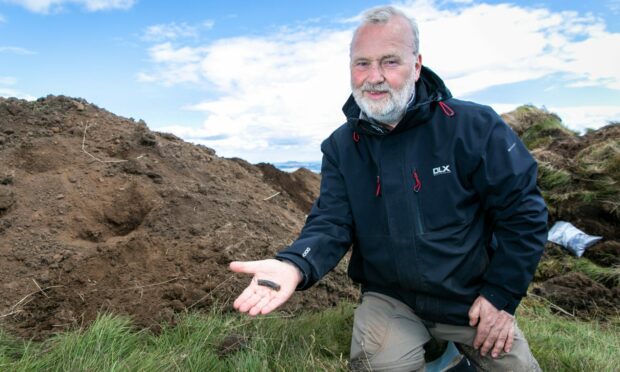
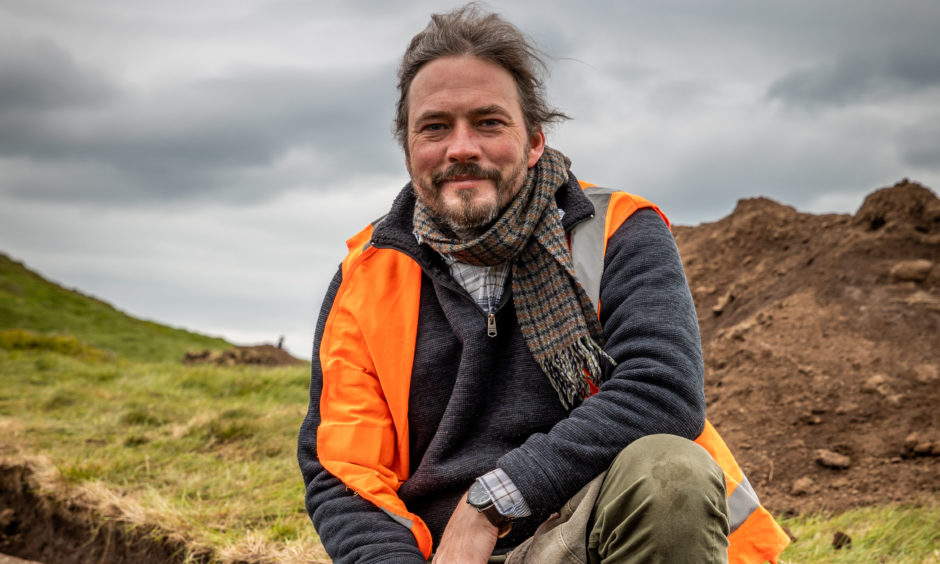

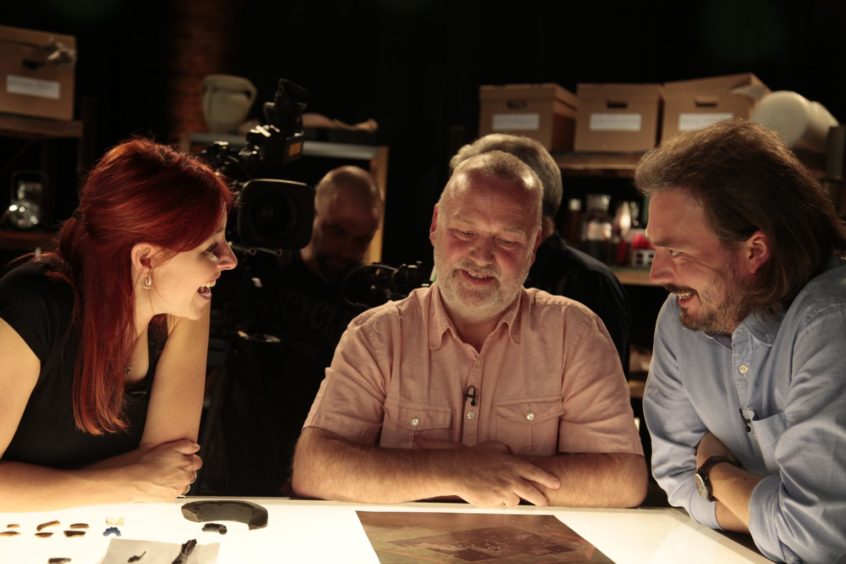
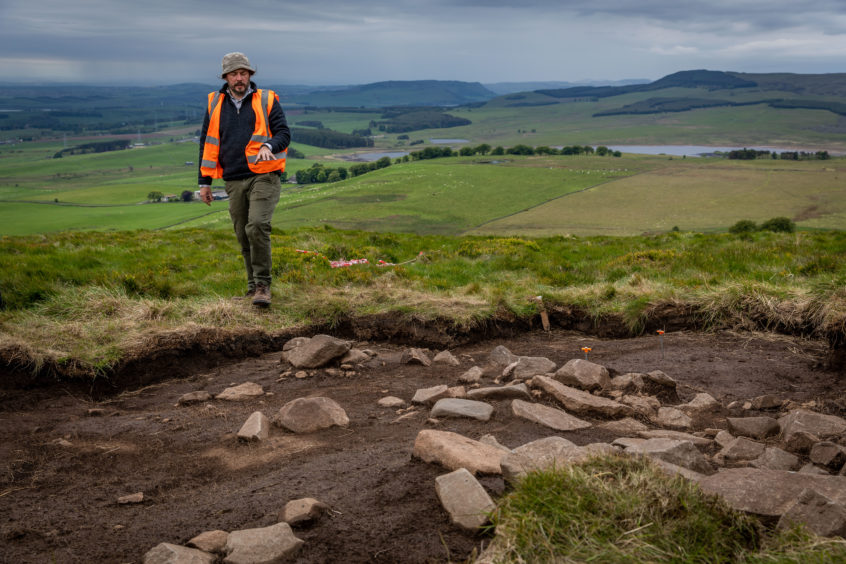
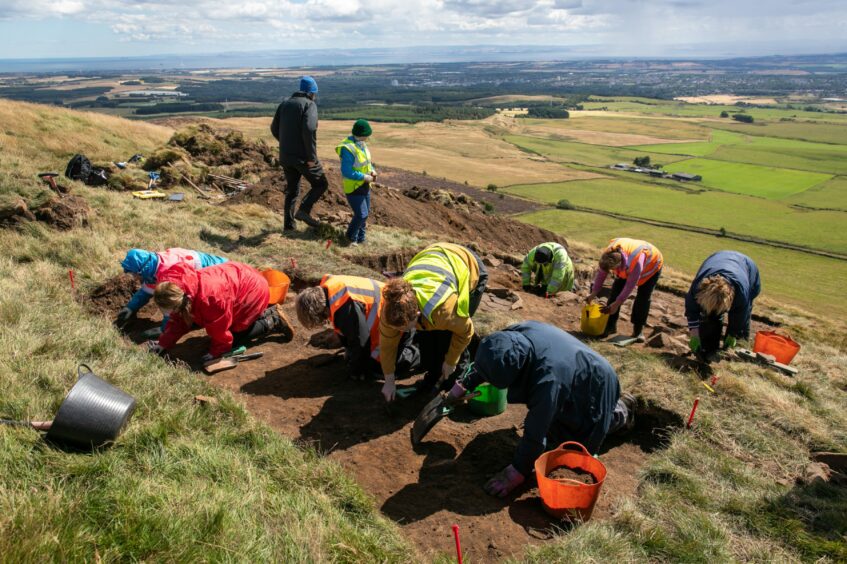
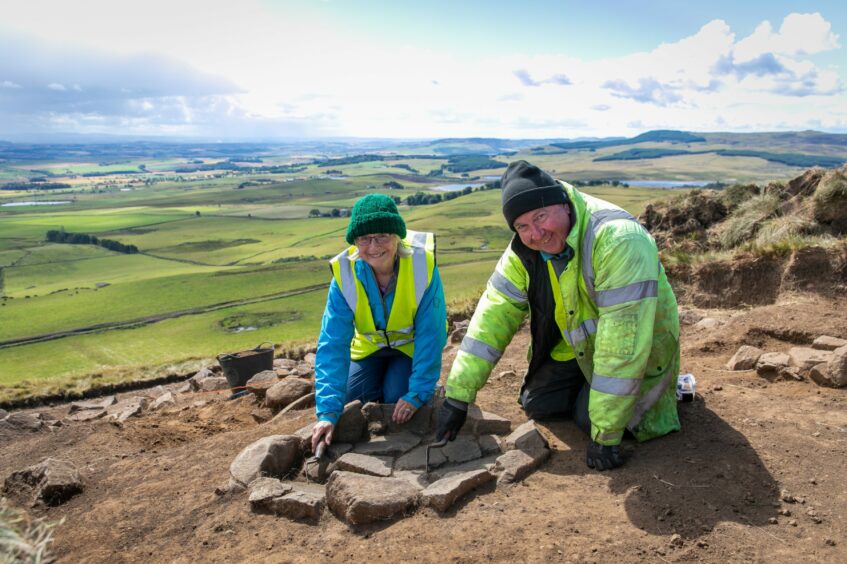
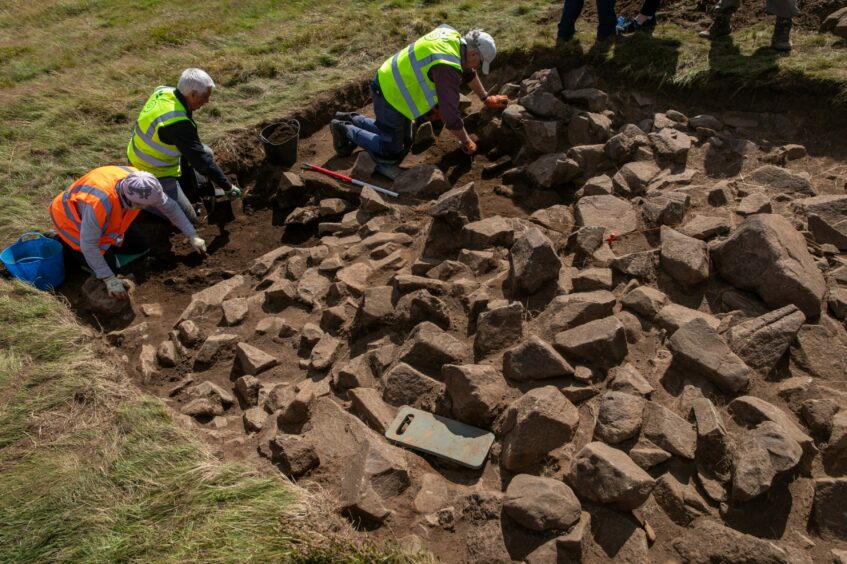

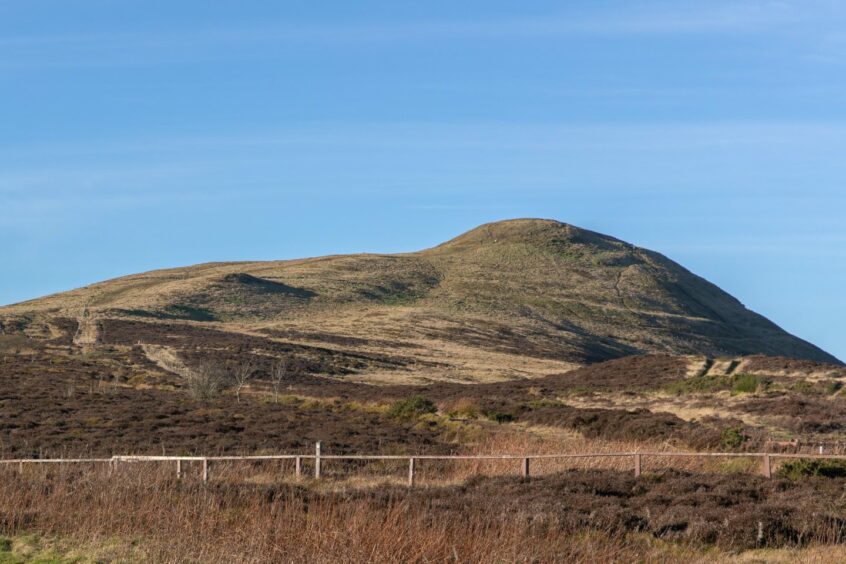
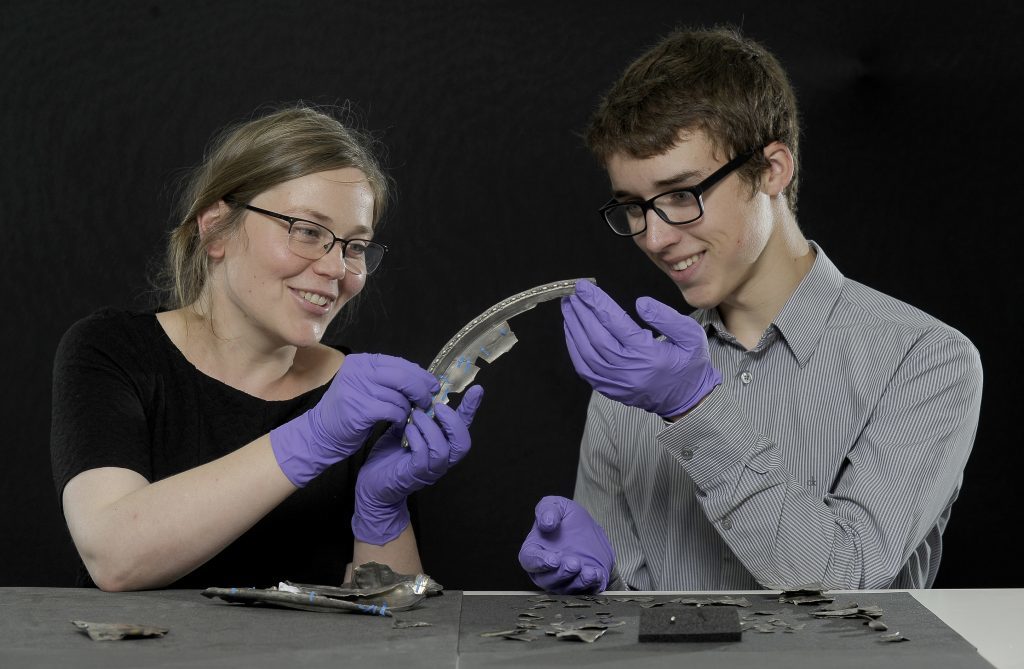
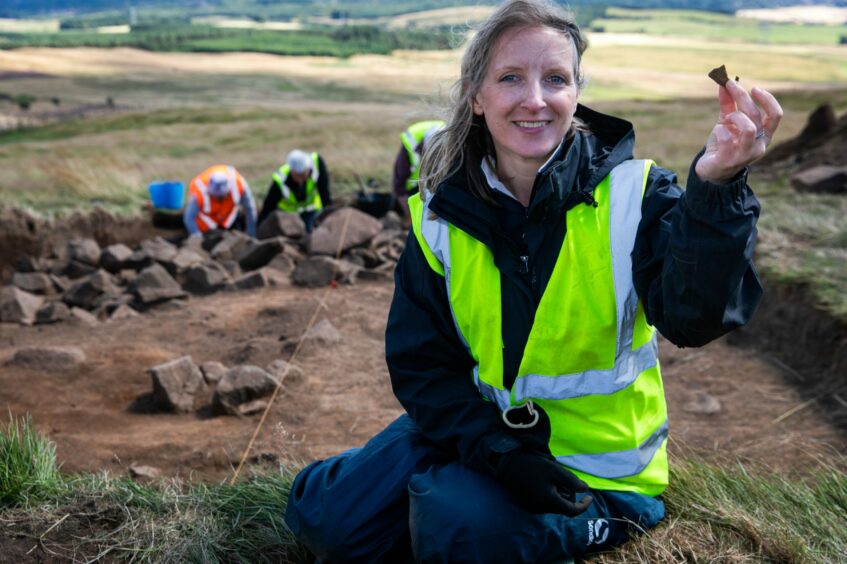
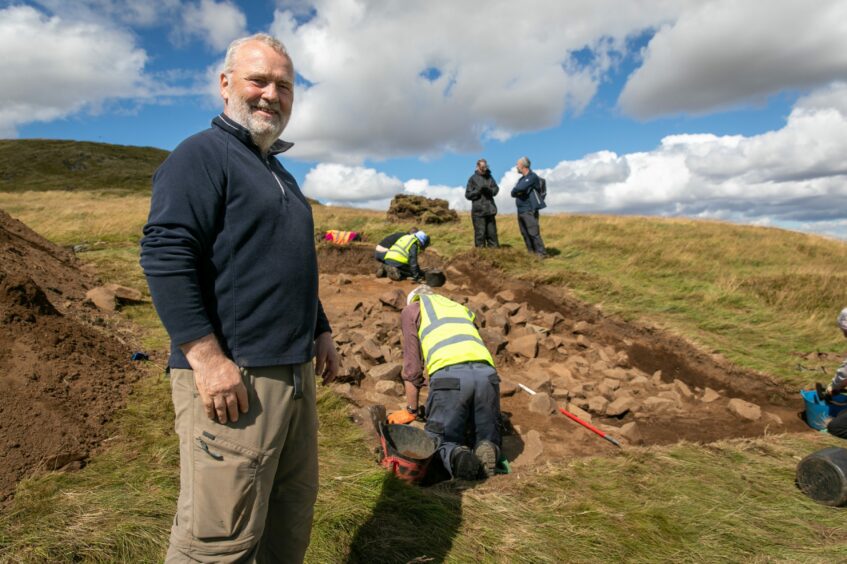
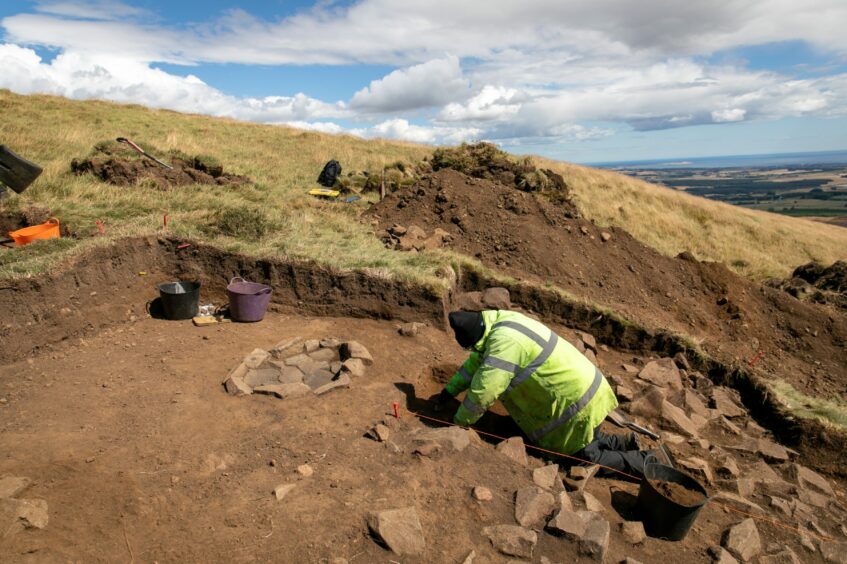










Conversation